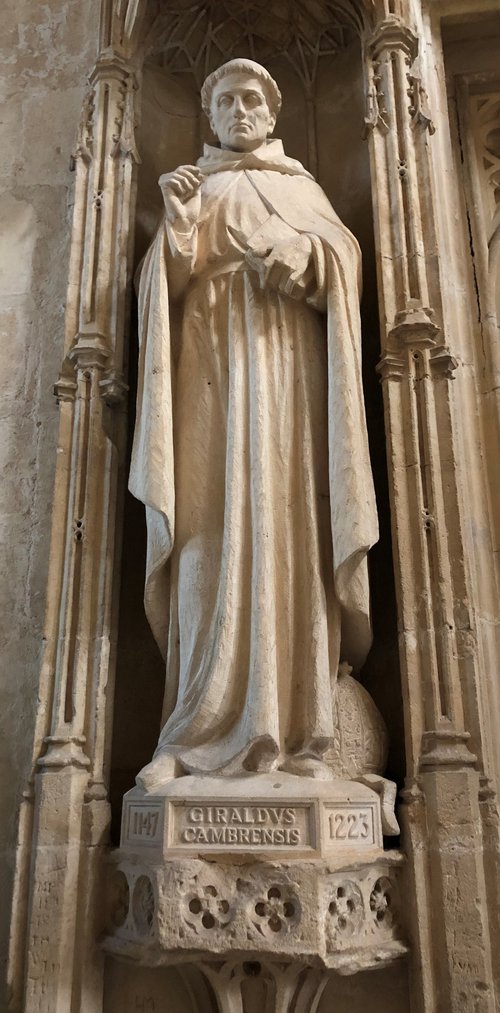Follow Gerald of Wales on your smartphone

An archdeacon’s journey around Wales more than 800-years-ago to recruit crusaders can now be retraced using your smartphone.
Gerald of Wales accompanied the Archbishop of Canterbury over Easter 1188 to recruit thousands of men for the third crusade. His detailed record of the journey is one of the main sources of information about Wales in the century after the Norman invasion of Britain.
Now the HistoryPoints project, with support from the Church in Wales and others, has provided QR codes for 37 places in Wales which featured in Gerald’s itinerary. Anyone who scans the QR codes with a smartphone can discover what Gerald saw there in 1188, along with the place’s wider history.
Each location has a page on the HistoryPoints.org website. Each has a link to the page for the next and previous places in the itinerary, making it easy to follow the route physically or virtually on home computers.
The tour is available not only in English but also Welsh and French, thanks to the work of volunteer translators, principally Catherine Jones and Professor Dai Thorne.
Among the places on the tour are churches, cathedrals and castles which existed before King Edward I’s creation of castles and walled towns a century after Gerald’s tour. The abbeys Gerald visited were closed centuries later but their ruins survive, as does the abbey church at Margam.

Gerald, who was Archdeacon of Brecon, failed in several attempts to become Bishop of St Davids and make the Welsh church independent from Canterbury. He died in 1223.
Dr Sarah Rowland Jones, Dean of St Davids Cathedral, says, “Gerallt Gymro, Geraldus Cambrensis, was buried in our cathedral and we are always pleased to welcome visitors who are interested to see his effigy next to that of his cousin, Yr Arglwydd Rhys (the Lord Rhys), in the cathedral south aisle. This QR-code trail will help visitors find him.”
Rhodri Clark, editor of HistoryPoints.org, says, “Gerald’s itinerary reflects the places in Wales which were important in the late 12th century, long before the Tudor dynasty or the Industrial Revolution. No recruitment drive for the crusade could afford to miss out Caerleon, Usk, Llanbadarn Fawr or Nefyn, for example.
“We hope that making this information available on the spot will bring Gerald’s fascinating observations to a new audience.”
Bishop Wyn Evans, the Church in Wales’ archivist and former Bishop of St Davids, encouraged people to follow the tour. He said, “Such an enterprise reacting to one of the greatest of Welsh churchmen is greatly to be welcomed.”
The photo above shows the statue of Gerald at St Davids Cathedral. The mitre at his feet represents his failed attempts to become Bishop of St Davids